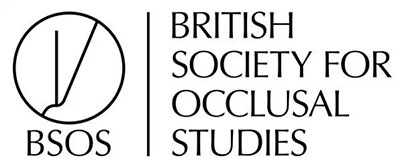What is Occlusion?
TMD & Occlusion - Jaw & Bite Problems
What is the TMJ?
TMJ is an abbreviation for the TemporoMandibular Joint i.e. your jaw joint(s). So TMD (TemporoMandibular Disorders) refers to a range of disorders which may affect your jaw joints, your chewing muscles, other muscles around this area and associated structures. TMD is the third most common chronic pain condition and sadly some people suffer for many years.
The joints can move in complex ways so have a unique structure. Your jaw undergoes a tremendous amount of use and like any part of the body can be affected by a variety of disorders.
Problems can occur on one or both sides, can come and go and may include:
- Clicking, locking or a grating sensation in the jaw joint.
- Difficulty opening, closing or chewing. (Often with pain)
- Pain / aching in the face, ears, jaw, head, neck or shoulders.
- Headaches or migraine.
- Tinnitus (ringing in the ear).
Because of the excessive forces that can be generated, then in addition to causing TMD disorders you may also see dental problems.
Dental Problems Associated with TMD/Bruxism
- Sensitive teeth.
- Cracked, Broken, chipped teeth and fillings.
- Chipped or broken crowns and veneers
- Worn teeth.
- Teeth split through the roots, needing extraction
- Loss of the bone supporting the teeth.
- Failed implants or implant crowns becoming loose
- Drifting / movement of teeth. This may include orthodontic relapse.
What causes TMD Disorder?
TMD is described as multi-factorial, which means there are many causes, often involving more than one of the following:
- Trauma e.g. a blow to the jaw, or whiplash.
- Bite problems. How the upper and lower teeth fit together (occlusion) can interfere with healthy jaw movements.
- Clenching and grinding of the teeth (Bruxism) can cause injury (microtrauma) to the jaw joints.
- Stress / anxiety increases tension in the muscles and the intensity of clenching / grinding. This can be a major factor in TMD
- Arthritis, degenerative disease and other medical conditions.
- Bruxism (clenching and grinding of the teeth) is very common. Many people who brux, particularly clenchers, are totally unaware until it is suggested by their dentist. Our understanding is improving and it is thought to be a type of movement or sleep disorder.
Although it is most common at night-time, many people will clench or grind their teeth in the day.
Stress tends to increase the intensity.
Who treats TMD Disorder?
Dentists who have received appropriate training should coordinate your care.
They may refer you to other specialists for additional care.
Physiotherapists / Osteopaths. Often neck problems can cause TMJ problems.
Medical Doctors including your GP can prescribe drugs to help relax the muscles or provide help for anxiety and stress.
There is a much higher risk of problems such as chipped and cracked teeth, broken fillings and crowns and even split teeth with patients who brux. You should choose a dentist who fully understands the complexities of dealing with this type of issue.
Your dentist should have postgraduate training in the management of the bite (Occlusion).
What can your dentist do to help?
Your Occlusion can sometimes (but not always) be a factor so your dentist may be able to help.
The most common treatment is to use a removable plastic appliance called a “splint” or a (bite) appliance. They can be used for the diagnosis and treatment of a TMD disorder.
There are many different types of splint or appliance which can be worn on the upper or lower teeth. They may cover a few teeth, or all the teeth in one jaw (or occasionally both jaws)
They are designed to affect the muscles and jaw joints in different ways. Depending upon your problem, an appliance can be used to reduce the forces acting on the jaw joint, to reduce the tension in the muscles or reduce the destructive force of the bite.
They are usually worn at night time, but occasionally for 24 hrs a day. An appliance may be designed to give you a more idealised temporary bite. This can help the muscles and/or joints to recover.
Improvements can be felt in days, however in some cases it can take much longer. Sometimes you feel better initially then worse again. This is common and is the reason you may need your appliance adjusting over several visits.
The number of appointments needed varies depending upon the type of problem. Your dentist will be able to advise you regarding this. Current evidence shows that hard appliances work much better than soft appliances (those like a gum shield).
The position of the teeth can interfere with healthy jaw movements. It may be that you would benefit from having a more ideal bite. If this is diagnosed as (part of) the cause of the TMD, sometimes one or a combination of the following may be recommended in the more long term:
- An Appliance worn on the upper or lower teeth at night, as protection.
- Equilibration i.e. balancing of the bite by minimal adjustment grinding of enamel and /or bonding of tooth coloured filling material.
- Restorative dentistry (i.e. crowns, veneers, onlays), is appropriate when teeth would benefit from being restored for other reasons e.g. decay or advanced tooth wear.
- Orthodontic treatment (Braces). This is especially appropriate for those with healthy teeth.
What can I do to help?
Try to limit your jaw movements (such as wide yawning and gum chewing). Avoid overstraining.
- Eat soft foods in small bite sized mouthfuls.
- Analgesics (Pain killers),
- Applying moist heat or an ice pack can help reduce your symptoms.
If you feel that you may have a TMD disorder or a bite problem please contact a BSOS member dentist.
